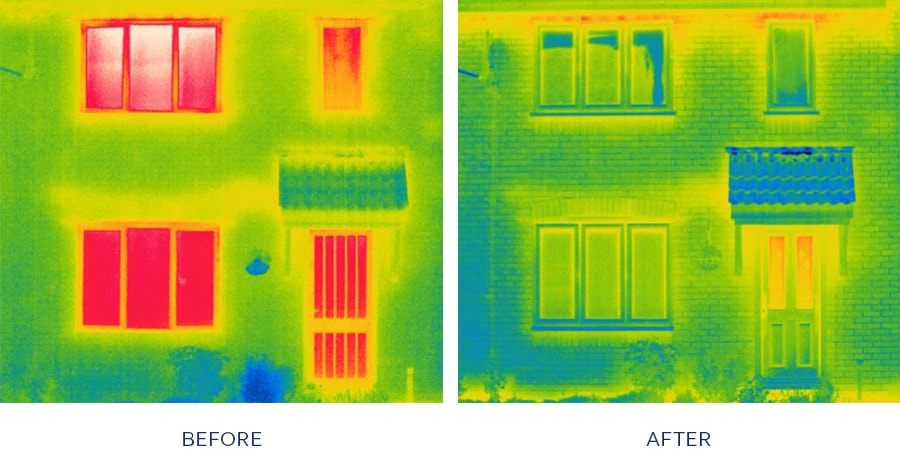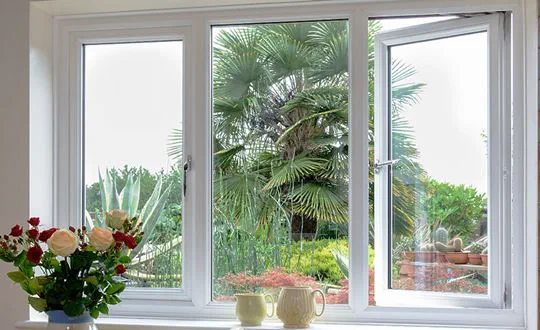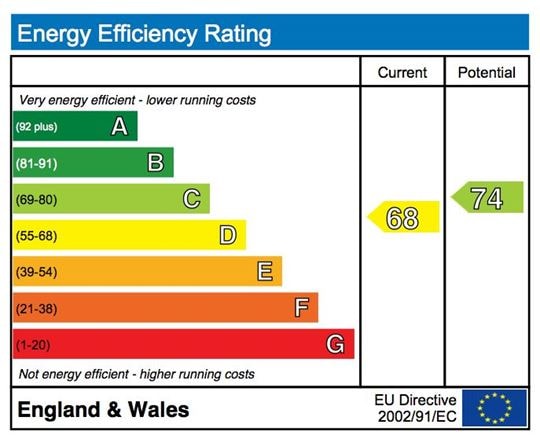Poorly insulated windows and doors leak valuable heat and money. Heat can escape through your existing windows and doors in a number of ways, including draughts, poorly fitted frames and panes that are low standard. It’s not healthy for your pocket or the environment. With the ever-increasing price of energy and longer winters, now is the time to take steps to ‘energy-proof’ your home.
This is our complete guide to the benefits of replacing your old windows and doors and how much you can really save on your energy bills.
The amount of money you could get off your energy bill right now is mounting up. The energy calculator developed by the Glass & Glazing Federation (GGF) shows the savings you could be seeing from new energy-efficient windows and doors. In fact, upgrading from pre-2002 uPVC double-glazing to A-rated windows from Anglian could save you £184.25 off your annual energy bills.
| A typical house upgrading from pre 2002 double glazed PVC-U windows with gas heating to Anglian A rated windows | £184.25 Annual Saving |
£1842.50 10 Year Saving |
Invest in long-term protection against rising energy bills by installing new windows and doors from Anglian. Keep money in your pocket and take a big step to reduce your carbon footprint now.
Thermal imagery shows you could be throwing money out the window, quite literally. The intense red areas show heat escaping through the old windows and door before upgrading to our new thermally efficient ones. It's a simple way of showing the big reduction in red-heat loss and a big improvement in heat retained. Different Anglian windows have different energy ratings and savings, but also enhance the aesthetic of your home. Start transforming your home today and explore our wide range of window styles.
Download the Infrared Test Report here
If your windows and doors are double-glazed already, it does not mean they are thermally efficient.
Up until June 2022, the minimum WER rating to meet Building Regulations in England was a C Energy Rating. This is now still only a B-rating. Companies may have only installed your windows and doors to these minimum requirements. Anglian have been installing A-rated windows as standard since 2014. Save more this year and every year that follows by replacing your windows with us today.
| How old are your windows? | Building Regulation Min. Energy Rating in England | Upgrading to Anglian's A Rated Windows - predicted energy savings |
| 20 years and older | 2.6Wm2k (Energy ratings didn't come into effect until 2002) | £184.25/year |
| 12 to 20 years | E Rated or 2.0Wm2k | £106.30/year |
| 1 to 12 years old | C Rated or 1.6Wm2k | £47.24/year |
Windows and doors with lower energy ratings mean keeping your heating on for longer. You spend more money and use more CO2. Upgrading old inefficient windows and doors helps keep both these things down.
Human activity is adding too much CO2 to our atmosphere creating a devastating impact on our planet. As a result, the carbon cycle is becoming overloaded. The UK government has set a target of net zero carbon by 2050. If nothing changes, forest fires, heat waves and rising sea levels will only continue to intensify.
Upgrading from pre-2002 double-glazed uPVC windows to A-rated windows from us saves almost half a tonne of CO2 a year.
To put that in context, 1 tonne of CO2 is the same as: The average emissions for one passenger on a return flight from Paris to New York OR Driving 6000km in a diesel car.
| A typical house upgrading from pre 2002 double glazed PVC-U windows with gas heating to Anglian A rated windows | 0.47 tonnes CO2 Annual Saving |
4.7 tonnes CO2 10 Year Saving |
As Britain’s leading home improver, we have a thorough recycling policy. When we remove your old inefficient windows and doors, we break them down to recycle as much as possible. We recycle parts of your old windows and doors into products such as loft insulation, plastic pipes and into non-visible areas of your new windows and doors.

From selection to installation, we provide you with the best quality products and a seamless process. Your new windows from Anglian are A-rated as standard, saving you money and lowering your impact on the environment.
Learn more about the savings you could make with our energy-efficient windows and doors or to get started on increasing your home's energy performance.
 How do double and triple-glazed windows work?
How do double and triple-glazed windows work?
Reducing energy bills, increasing security and insulating the home, double-glazed windows are becoming essential for every homeowner. But how exactly do they do this? We're here to explain the science behind our energy-efficient windows.
 Energy ratings explained
Energy ratings explained
Learn about the energy rating performance scale and the building regulations that sit behind them.


